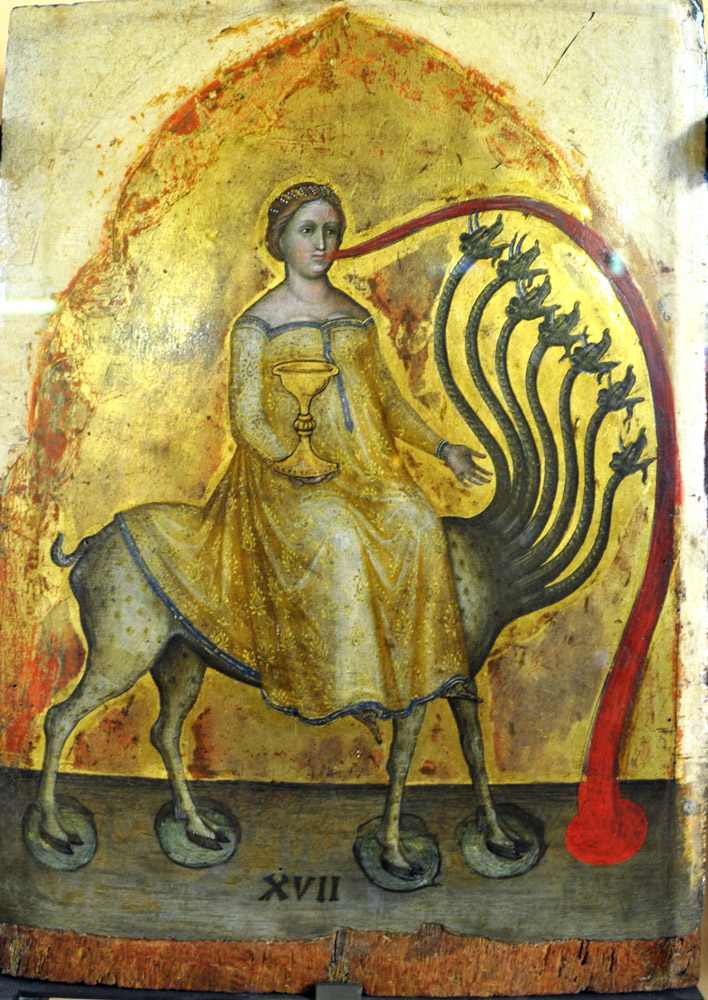But aside from these direct renderings, the book strongly influenced a number of other iconographic types. For example, "Immaculate Conception" imagery starting in the later Middle Ages borrowed from Revelation's "woman clothed with the sun" (Revelation 12:1). Like the woman, Mary was posed in front of a sunburst, her head surrounded by twelve stars, and a crescent moon beneath her feet. In another example, countless images picture the archangel Michael's expulsion of Satan and his followers from Heaven (example), closely following Revelation 12:7-9. Even more common was the identification of the four creatures of 4:7 with the four evangelists (example).
The author of Revelation identifies himself simply as "John," in exile on the island of Patmos (1:4,9). As early as the second century commentators decided that this John, the apostle John, and the author of the Gospel of John were all the same person. Taking this cue, artists consistently portray the author as the young and beardless apostle, sitting on an island with pen and book, and gazing up at a vision of Heaven (example).
In the first millenium Revelation also influenced the decoration program in some churches. At Sant'Apollinare Nuovo in Ravenna, for example, the left and right sides of the nave each feature a long procession of martyrs carrying crowns as they approach a throne. The crowns are shaped like the laurel crown of victory that the iconography of martyrs borrowed from classical images of athletic contests, but they are made of gold. Thus they refer at the same time to the golden crowns that the elders place before the throne in Revelation 4:4,9 and to the athletic "prize" won by the just in 1 Corinthians 9:24. Moving as they do toward the apse with its altar, the two processions give the viewers a strong sense they they too are approaching the real presence of Christ.
This sense is expressed even more emphatically in the two arches that precede the apse at St. Praxedes in Rome:

Prepared in 2020 by Richard Stracke, Emeritus Professor of English, Augusta University
HOME PAGE

In Alberegno's "Whore of Babylon" each head has two horns, not ten; there is no inscription on the forehead; and the dress is a simple gold in color – all simplifications of Revelation 17:3-6. (See the whole of Alberegno's polyptych, with commentary.)

In St. Mark's Basilica's naturalistic "King of Kings" (Revelation 19:11-16) the king wears just one diadem, not seven, and his eyes are not "as a flame of fire." (See the description page for further commentary.)
.smal.jpg)
The four creatures at the throne of the Lamb, from the Apocalypse frescos at Pomposa Abbey, Italy. (See the description page.)